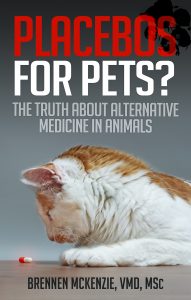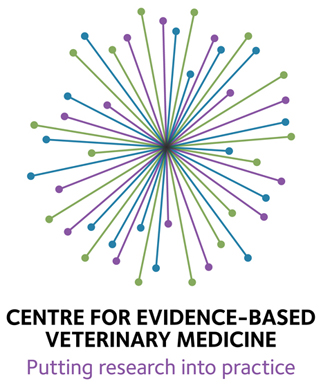One of the most popular plant products touted for medicinal use in pets is garlic Allium sativum. A recent newsletter by Dr. Deva Khalsa, a popular alternative veterinarian, makes some typical claims:
Garlic is a miracle herb!
Garlic (Allium sativum) has been valued for thousands of years for medicinal purposes.
reported adverse affects from garlic add up to a total non-event over the past 22 years….This proves beyond the shadow of a doubt that the risk of using garlic is so infintessimally low that it’s simply statistically insignificant. What is significant is all the positive research delineating the medicinal powers of garlic.
a natural antibioitic
it’s antifungal, antiviral and antibacterial effects can contribute to the healing process.
Garlic increases general immune activity
Uncooked garlic helps to lower blood triglycerides and choleterol making it useful for certain breeds (Schnauzers and Beagles) that are predisposed to this problem.
Compounds in garlic act as antioxidants and help flush toxins out.
garlic has been fed to dogs in order to help prevent flea infestation.
A host of studies provide evidence that the allicin in garlic works to inhibit cancer formation.
Since these pretty fairly represent the claims made for garlic, I will address each in turn.
1. Garlic is a miracle herb-
Well, miracle is a pretty tough word to justify when applied to any medical therapy, all of which come with pros and cons. I’d call this a warning sign!
2. Garlic has been used medicinally for thousands of years.
True, but irrelevant to whether or not it works. The traditional use of plants as medicines has a poor record of predicting uses that are actually proven valid by controlled scientific testing. Here are some of the traditional uses record for garlic (from Wynn SG. Fougere BJ. (2007). Veterinary Herbal Medicine St. Louis: Mosby Elsevier.)
Traditionally, garlic has been used in humans [or animals] for abnormal growths, bronchitis, pneumonia, digestive problems, intestinal infection, tuberculosis, dysentery, earache and ear infection, vascular disorders…influenza…relieve toxicities, and kill parasites…treatment of a cow that was unable to rise after calving…coccidiosis in poultry…breast tumors on dogs (topically), for distemper, for jaundice, for rheumatism, and for thyroid complaints and worms…for fungal infection and swelling of the tongue, oral blisters and wounds…contagious abortion, tetanus, milky diarrhea, abdominal pain, asthma, polyuria, sores, compound fractures, epilepsy and swelling of the kidneys, gangrene of the lung…
When something is used to treat such a wide variety of apparently unrelated medical conditions, either it is a miracle or it is an example of how easily people can be fooled into thinking a useless therapy is helping. A truly miraculous therapy shouldn’t have any trouble proving itself in scientific testing, so when the evidence is lacking despite centuries of use and decades of research, the most likely explanation is human fallibility rather than miracle cure.
3. Risk of using garlic is negligible.
Mostly true. A number of in vitro and lab animal studies have shown the potential for garlic to cause anemia and other problems. Studies looking at garlic as a potential antimicrobial in swine feed found the pigs ate less and gained less weight (and also had and “objectionable” taste, for those carnivores among you). However, the amount of garlic which must be fed to cause clinical illness in dogs is probably much larger than is typically used. Cats are much more sensitive, but they are also less likely to accept garlic.
There are a couple of important caveats here, though. For one thing, the in vitro and lab animal studies showing potential dangers of garlic, which Dr. Deva and other proponents of garlic dismiss as not relevant to actual use, are exactly the same kinds of studies which show potential benefits and which they constantly cite to justify actual use of garlic. This is a classic case of confirmation bias in which people accept as valid evidence which supports their position but reject evidence which contradicts it.
The other factor is that there are case reports of individual dogs who experienced anemia, high blood pressure, and other serious adverse effects from consuming relatively small amounts of garlic (e.g. 1, 2). It is often the case with pharmaceuticals, which appear safe in relatively small test populations of a few thousand people, less common sensitivities in some individuals appear when they are given to much larger numbers of patients. This is part of the business of balancing the risks and benefits of any treatment. So while the risks of garlic appear to be low for most dogs, it is not appropriate to assume they are inconsequential, especially when evidence for benefits is so poor (as we will see).
4. Garlic has antibiotic, antifungal, and anti-parasitic properties.
Maybe. The basis of this claim, apart from low-reliability evidence such as anecdote and opinion, is in in vitro and animal model studies. Chemicals from garlic do have effects on bacteria, fungi, and parasitic organisms in the laboratory. This only suggests that these chemicals might have similar effects in the real world. It doesn’t prove anything. What an isolated chemical does in a petri dish is not necessarily what feeding garlic will do in a living animal. And as I often remind people, bleach has antibiotic, antifungal, and anti-parasitic properties in the lab, but I wouldn’t recommend it as a dietary supplement!
The research in real animals is mixed. Garlic has failed to show benefit in at least as many studies as it has shown some effects, so the balance of the evidence is unclear. And the published research is almost all in agricultural animals, not companion animals.
5. Garlic “boosts” the immune system.
Nonsense. The notion of a general immune stimulant which has clinically beneficial effects and no side effects is a fantasy that ignores the incredible complexity of the immune system and how it interacts with all the potential threats it is exposed to. This empty bit of marketing is discussed, and demolished, in detail in this article.
6. Garlic lowers triglycerides and cholesterol.
Probably not. A 2009 review of the research in humans found that “the available evidence from randomized controlled trial does not demonstrate any beneficial effects of garlic on serum cholesterol.” The point is largely moot since blood lipids are almost never a meaningful health issue in companion animal species. It is true, as Dr. Deva suggests, that it is an uncommon problem in certain breeds. However, I would note that both of the dogs in the case reports I mentioned before who suffered harm from eating garlic were Schnauzers, the same breed that most often exhibits this otherwise rare problem. So I’d be very careful about suggesting garlic as a remedy for this issue in this breed given the lack of evidence for a benefit and the presence of evidence for possible risk.
7. Garlic is an anti-oxidant and helps remove “toxins”
A hypothetical treatment for a hypothetical problem. First off, the subject of oxidation and anti-oxidants is about as complex as the subject of immune system activation, and there is growing evidence that anti-oxidant therapies do little good and some harm (e.g. 3, 4, 5). So while garlic compounds show some antioxidant properties in the lab, they also show the ability to cause oxidative damage (that’s where the anemia comes from), and there is zero evidence in real cats and dogs for any benefit from garlic as an anti-oxidant.
Secondly, the mysterious “toxins” so often mentioned as a target for health promoting therapies are a classic sign of snake oil marketing. Without information about specific toxins, evidence for the harm they do, information about how they are processed and eliminated by the body, and evidence concerning how garlic can aid in this process, this claim is totally meaningless. And, not surprisingly, none of the information or evidence is offered for garlic.
8. Garlic is an effective flea control method.
Doubtful. There are, of course, plenty of anecdotes from people saying that garlic drove the fleas away from their pets like magic. There are just as many that say garlic didn’t help at all. There is absolutely no research evidence showing garlic supplements to be an effective form of flea control. It is often given with Brewer’s yeast, which has been shown to be ineffective as a flea repellant. So for all the confidence with which this claim is made, it is simply made up.
9. Garlic is useful in prevention or treatment of cancer.
Maybe. There is low to medium level evidence in humans that eating garlic may reduce the risk of some kinds of cancer. The American Cancer Society concludes
there is not enough evidence at this time to support eating large amounts of garlic or taking garlic supplements for cancer prevention. Garlic may have the potential to interfere with anesthesia or other medicines. It is reasonable to include garlic as part of a balanced diet, unless one has a particular health problem or is taking medication that has been shown to be adversely affected by garlic.
Other research summaries show a mix of possible benefits and risks, including bleeding and interference with the action of a number of medicine. So like anything with the potential for benefit, there is the potential for harm.
And, as usual, none of this research has been done in companion animal species. So while extrapolation from research in humans is often necessary, it is also a great way to draw the wrong conclusions. Such research strongly suggests which ideas may be worth pursuing and which may not, but it certainly doesn’t provide a confident, reliable answer about what to do for our pets.
Bottom Line
In vitro and lab animal research suggests a number of potential uses for garlic. The same level of research suggests some potential danger to garlic use in dogs and cats. There is almost no clinical research to substantiate any of the claims made for garlic use in pets. Traditional use suggests almost every pant is a cure-all, and the majority of such claims have yet to pass the test of scientific study. So at this point, hysterical claims of garlic as a “miracle food” are totally unjustified. The potential benefits deserve to be investigated, but they are mostly theoretical and unproven. The risks are probably low overall, but some individuals have been harmed by eating garlic, and we are currently unable to predict accurately which patients will be adversely affected.











